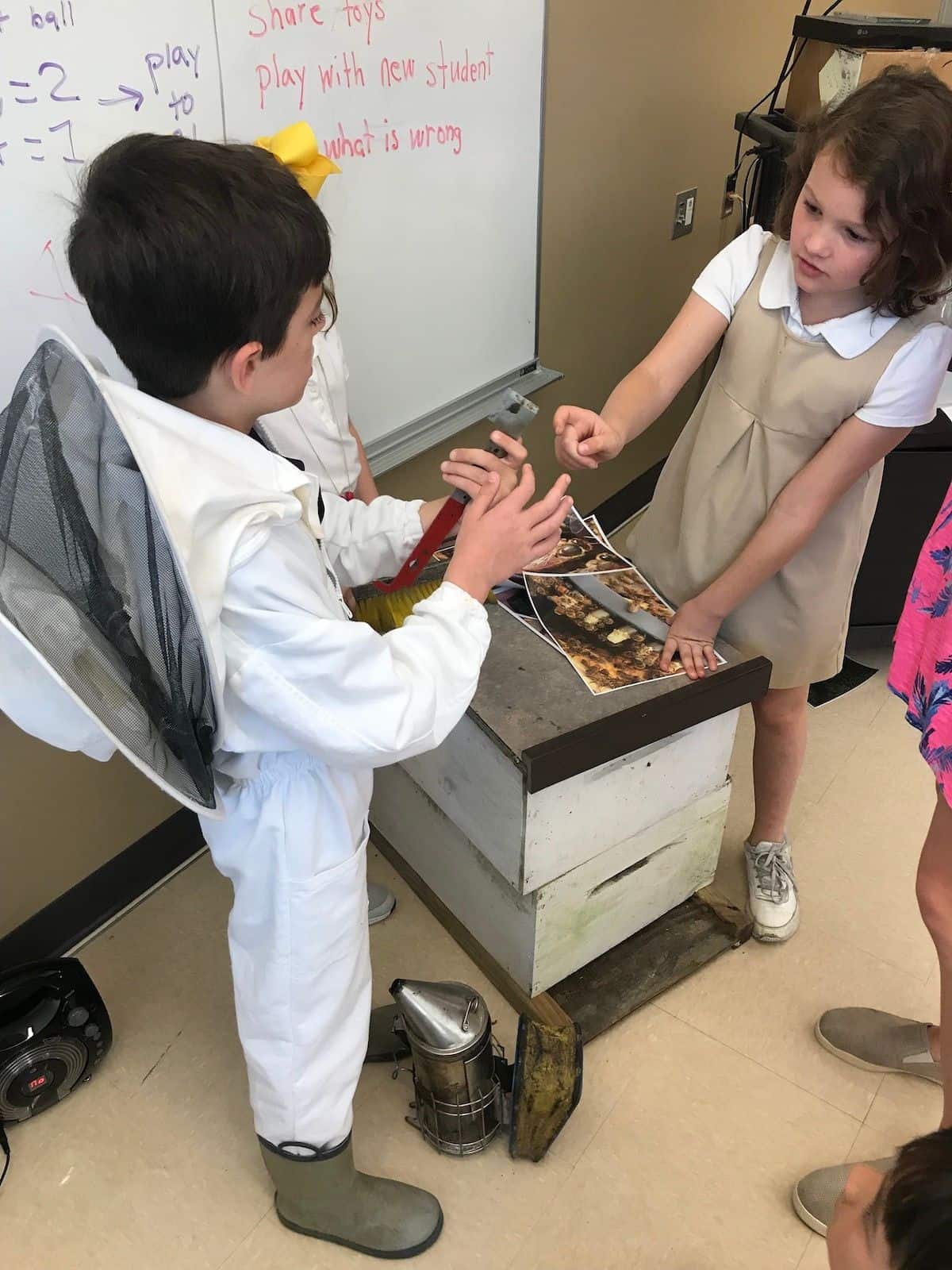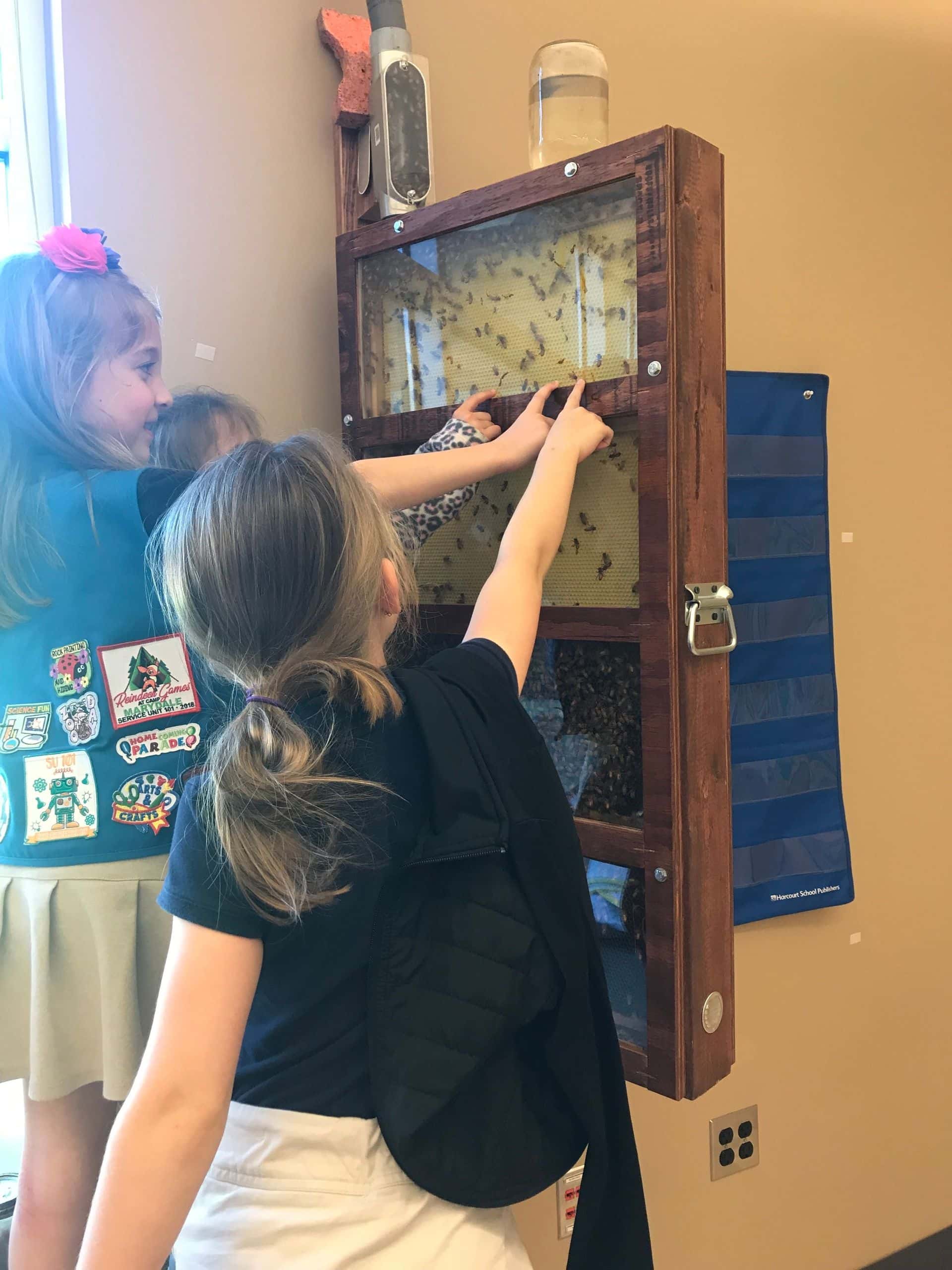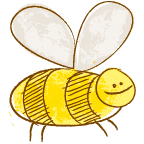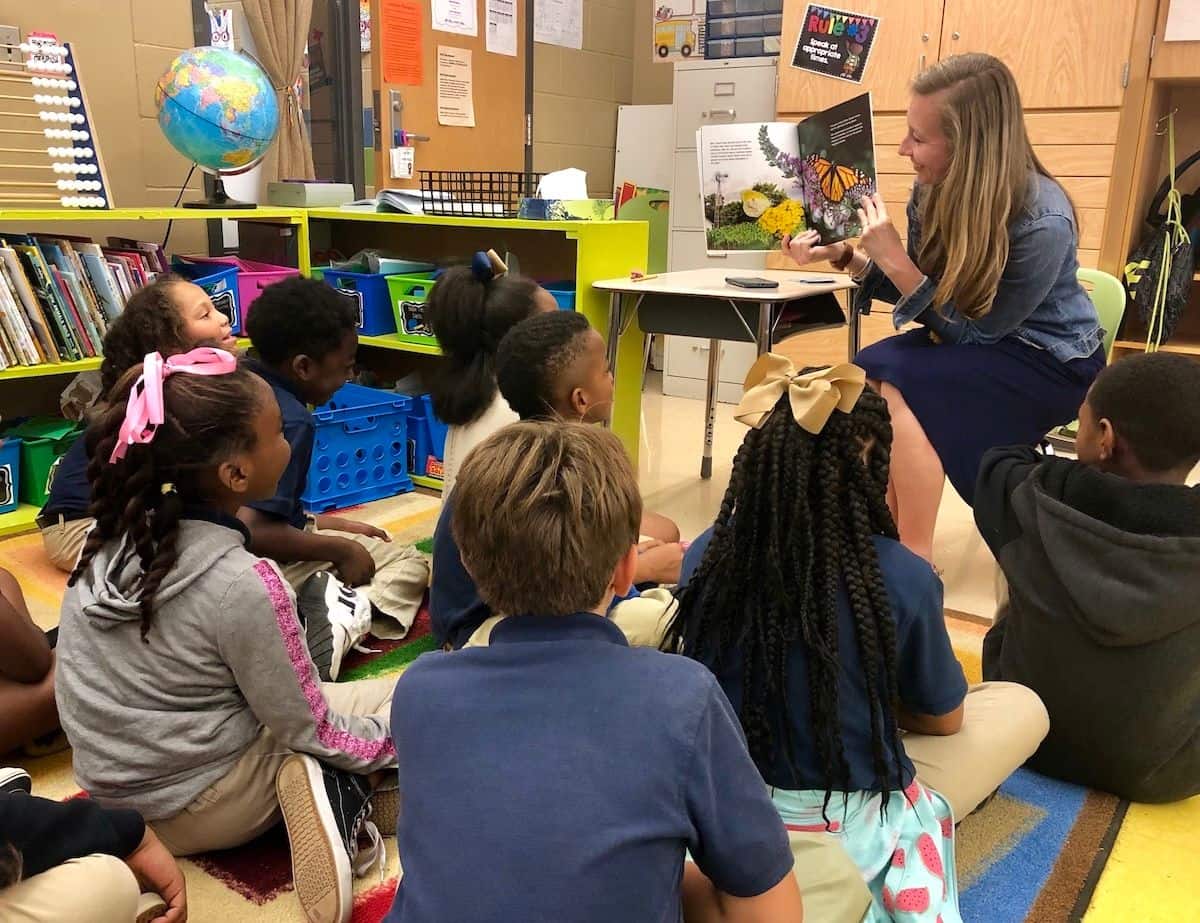Children learn in many different ways, and the educators at Rollins Place Elementary School in Zachary, La. are cultivating an innovative environment to inspire all types of learners.

“The bulk of what we do with the lower grades is about exposure, connections and enthusiasm. If students understand how living things connect and impact their daily life, and they have excitement for these things, maybe that will lead to the next step,” explains Rollins Place Elementary Librarian Kristy Gilpin. “Maybe they pick up another book or care just a bit more about the foods they eat and what’s growing in their backyards.”
As part of the second-grade curriculum at Rollins Place Elementary, students have a comprehensive science unit on plants and pollinators that lasts approximately four to five weeks and includes a variety of creative approaches to learning. The unit usually takes place in the spring, when plants are blooming and the students are more likely to observe pollinators outside.
The students start by making observations about plants and learn about the structure and function of each part of a plant. Then, they learn about pollinators and once again focus on form and function. A hands-on STEAM robotics portion using LEGO WeDo 2.0 is the culminating lesson of the science unit.
During the robotics portion, students work in small groups to create and program a model of a bee and flower using a LEGO representation, which mimics the relationship between the pollinator and the plant. Next, they study specific plants and pollinators through various resources like books and websites paying particular attention to how certain plants and pollinators naturally go together. Finally, the students add other materials to the original LEGO model to demonstrate a specific plant/pollinator relationship.
This robotics lesson not only helps students explore how pollinators take an active role in plant reproduction but also sparks creativity, collaboration and critical thinking.

After building the robotics models, the students make stop motion animations about the life cycle of a bee.
In 2018, Gilpin added an additional component to the plant and pollinator unit: an indoor observational beehive. She secured a Bee Grant for Rollins Place Elementary after being inspired by the beehive at nearby Live Oak Middle School, a 2017 Bee Grant recipient. Rollins Place Elementary used the monetary grant to purchase and install an observational hive in an empty classroom in the spring of 2019. The hive measures about four feet high by two feet wide, and students can observe bees from either side.
“The observational hive is such a natural extension of what our second graders were already learning and teachers were already doing in the plant and pollinator unit,” says Gilpin. “The beauty of having the beehive in the school was the constant access the students had to it. They were able to observe changes with the bees on a daily and weekly basis and so clearly able to watch the stages of life.”
The beehive is stationed near the second-grade classrooms, but it was integrated into the routines of many classes, not just science lessons. Gilpin would often hold her library classes there, and other teachers would bring their students to observe the bees often too.
“The kids were mesmerized by the bees, and they would just sit and watch. That was my favorite part,” explains Gilpin. “The students’ attitudes about bees changed so much because they were able to spend time with them up close.”
As a consequence of the global pandemic, the bees are currently with a local beekeeper rather than at Rollins Place Elementary. However, the school is brainstorming inventive solutions to allow the students to safely resume observing the bees — perhaps even through a bee web cam. No matter what 2021 brings, “Let’s be creative and dream,” says Gilpin.
Due to COVID-19 and related uncertainties, this year Whole Kids Foundation and The Bee Cause Project is providing support to previous Bee grant recipients through a Renewal Bee Grant program. The application window is open from November 1 to December 15, 2020. Learn more.



